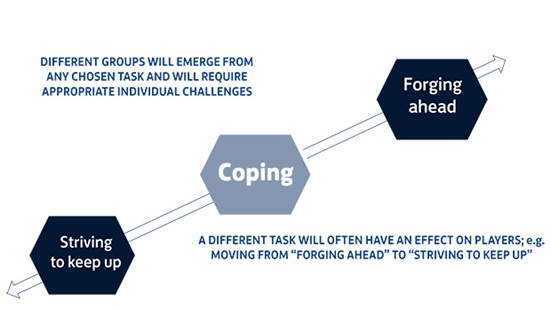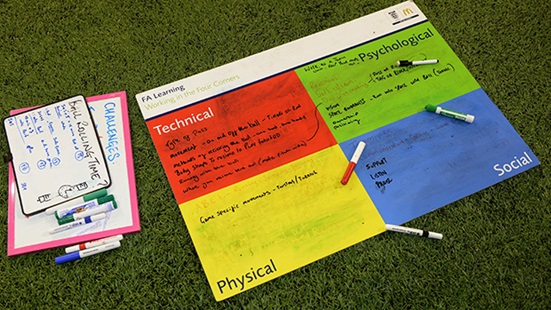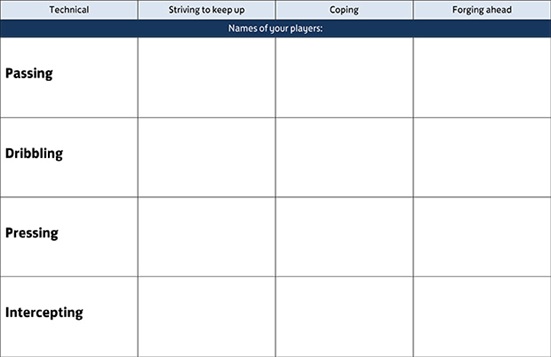
Kieran Fox: Managing the Difference
When planning your coaching sessions, we normally design sessions aimed at the whole group, however, once the session starts players may strive to keep up, cope or forge ahead. Can we manipulate practices to support player development using The 4 Corner Model?
Knowing your players is vitally important to creating a bond between everyone within the team, it is also helps you as the coach/manager to understand player’s strengths & areas for development.
Knowing your players:
Your players will prominently fall under three headings depending on any given task:
Within knowing your players do you know what’s the age range or who’s the youngest or oldest what part of the year are they born in. How many of them play other sports? What are they?
Think about what are they already doing well and what they could do better, once players master a certain skill/ technique or make significant strides to mastery can we recognise the need for positivity to maintain their effort and capacity for improving even more.
Players who lack the confidence (psychological corner) may need that extra support/ positive reinforcement to really make them strides to try new skills and master them.
When players have adequate positive reinforcement, they will be more emotionally open to coaches who want help with areas for development, this will also help identify players who can handle setbacks and adjustments or players who feel frustrated and not being as adaptable.
The 4 Corner Model
When working with your players how might you work differently to support their individual development across The 4 Corner Model?
How can you manipulate practices to help develop players individually?
Technical/ Tactical:
-
Can we put players in situations/ positions where they will get lots of repetition of certain skill/ technique?
-
Have a captain for each team within the session to determine what tactics each team to want to employ for the given task?
Psychological:
-
Only one player on the pitch for a period of time can communicate with players during the session?
-
Encourage players to share new ideas/ skills to solve the problem PEER TO PEER Learning?
Social:
-
Each player is aware of their responsibility & accountability for their given role/ position?
-
Players are actively encouraged to practice individually before, during and after sessions? E.g. arrive early, practice at home
Physical:
-
Know what types of food give you energy to be able to play football?
-
Make sure you know when it’s time to have a rest and recover?
Who needs more? Who needs less?
Recognising that everybody is different and will perform differently depending on the given task, using the table below can you recognise which of your players fit under the following headings:
Everyone Learns Differently!
Ask yourself…In which way would do I learn best?
-
Looking at pictures of people performing the skill.
-
Listening to an expert explain how to do the task.
-
Reading about how to perform the task in a book.
-
Watching someone else perform the skill and then trying it yourself.
Do you know which way your players learn best?
The VARK model of learning styles suggests that there are four main types of learners:
Visual Learners:
Visual learners learn best by seeing. Graphic displays such as charts, diagrams, illustrations, handouts, and videos are all helpful learning tools for visual learners.
Auditory Learners:
Auditory (or oral) learners learn best by hearing information. They tend to get a great deal out of lectures and are good at remembering things they are told.
Reading and Writing Learners:
Reading and writing learners prefer to take in information displayed as words. Learning materials that are primarily text-based are strongly preferred by these learners.
Kinaesthetic Learners:
Kinaesthetic (or tactile) learners learn best by touching and doing. Hands-on experience is important to kinaesthetic learners.
For more information on Hertfordshire FA Coach Education please click here.













